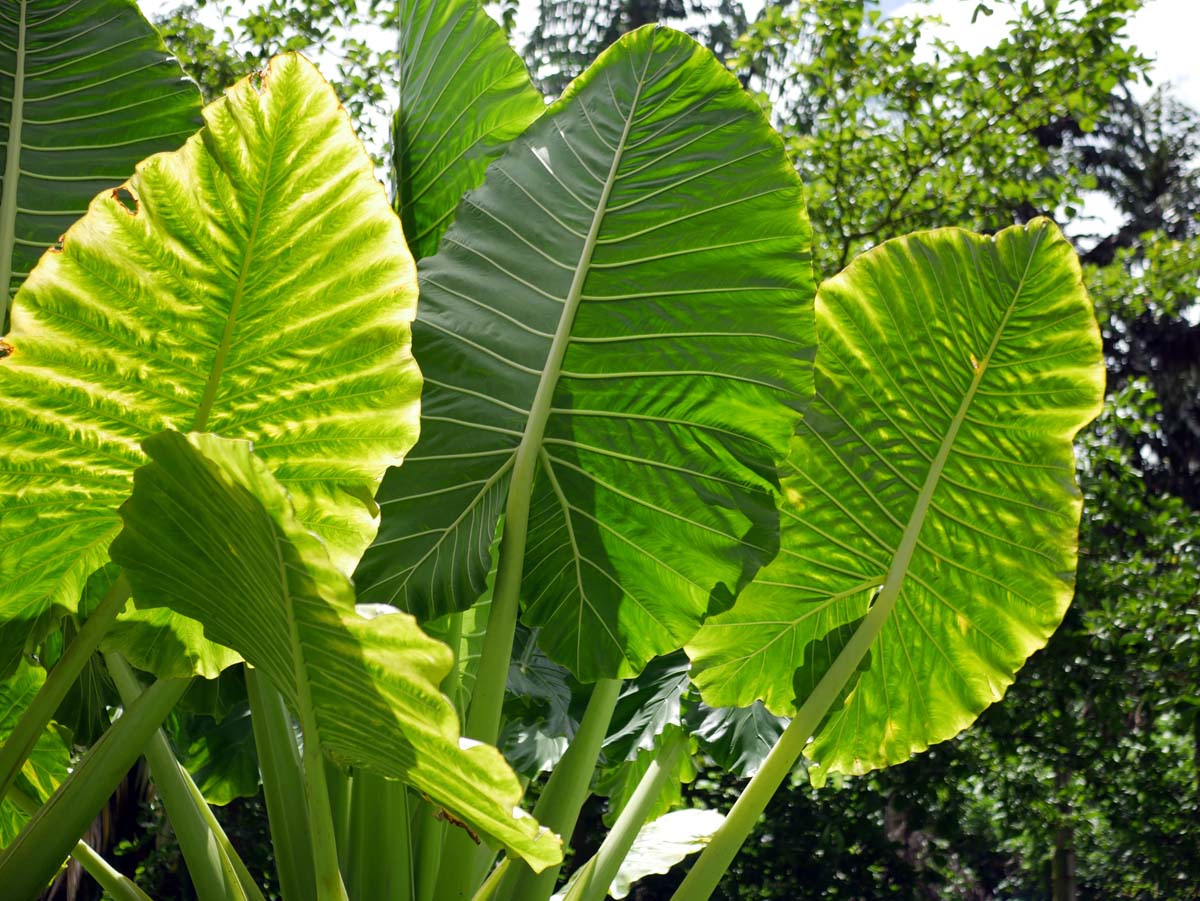Description
Alocasia – Elephant’s Ear
There are about 70 species of large leafed rhizomatous and tuberous perennials typical used as annual tropical plants, in this genus. Found in the wild in tropical forest and Southeastern Asia in open, sunny, or shady usually damp sites by streams and marshes. The heavily veined heart shaped to arrowhead shape can be anywhere from 8-36” long. The leafs can be black, dark violet, bronze, red, or purple with distinctive markings. The flower is obscured by foliage and is not very showy. Some species are edible and others are poisons causing swelling of tongue and throat, if skin comes in contact with sap it may irritate the skin.
Intolerant to frost. If grown indoors grow in mix of equal parts composted bark loam and sand in filtered light. Water freely during growing season and apply a balanced liquid fertilizer every 2-3 weeks. Water moderately in winter.
If grown outdoors grow in moderately fertile humus rich moist but well drained soil in partial shade.
Prone to mealybugs, scale insects, fungal leaf diseases, bacterial leaf disease are common under glass. Bacterial soft rot can occur.
Alocasia maccrorrhiza – Giant taro – This species derives from India, Sri Lanka and Malaysia and grows 12-15’ feet tall and 6-8’ feet wide. It bears broad arrowhead shaped glossy mid to dark green leaves up to 3-4’ feet long with pale veins. It bears insignificant but fragrant, 8” long yellow-green flowers. It’s widely cultivated for its edible rhizomes and shoots.
Zones 10-12




